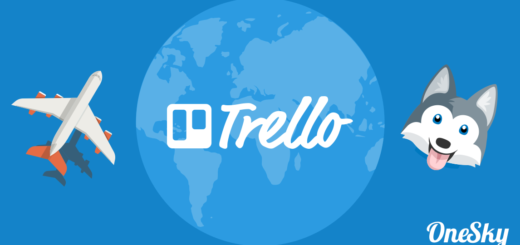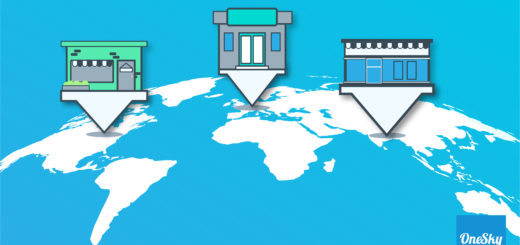Beyond Borders: Real-Life Successes in Internationalization
Internationalization is a critical step that allows your offering to make a splash in local markets around the world. If you’re looking to build a successful multinational brand, this area of growth and expansion should be at the top of your priority list.
Why? Simply put, this single step separates Netflix from the spin-off and McDonald’s from the one-and-done fast-food joints—instantly elevating your brand to one that’s renowned for its global impact.
If you’re not sure where to start, you’re in good company. Internationalization as a concept can be quite complex, often requiring an expert hand to pull off.
That’s where OneSky comes in—acting as your fractional internationalization, localization, and translation experts to keep your process as smooth and streamlined as possible.
In this article, we’ll be exploring what internationalization is as a concept, as well as several successful case studies that highlight different core focuses of an ideal internationalization strategy. We’ll also be showing you how you can elevate your brand by choosing OneSky to support you through the internationalization process.
Read on to learn more and begin building your internationalization strategy today.
What is Internationalization?
Internationalization (known by many as i18n) is the process of logistically preparing your brand and offering for global expansion. While it is aligned with the concept of localization (l10n), it is fundamentally different—focusing instead on big-picture engineering and development steps rather than presentation localization and optimization for a target market.
Both internationalization and localization are required for successful global expansion and dominance in your industry of choice.
Now that we’ve covered the key similarities and differences between internationalization and localization, it’s time to take a look at industry titans who have successfully leveraged internationalization strategies in their global brands and businesses.

The Tech Giant: Apple’s iPhone
From its humble beginning, Apple as a brand has been focused on internationalization and global adaptability. Even the most basic Apple models of the 80s and 90s offered interface adaptability for international markets, tailoring the experience across many different regions and languages.
This adaptability was not commonly seen in computers or tech brands prior to Apple, making them the perceived leader of new markets (such as tech and biometrics, respectively, as they launched). Beyond their commitment to excellence toward international audience members, their consistent user experience that didn’t compromise as they expanded to the rest of the world solidified the brand as a household name. While the expansion into foreign markets often triggered differences in UX for other brands, Apple remained the same—creating a seamless, effortless experience for every member of their customer base. This remained true whether the customer lived in America, Asia, Canada, China, Germany, or other parts of Europe.

E-Commerce Evolution: Amazon
Amazon is another technically driven giant that took several pages out of Apple’s playbook. Rather than create UX differences across site presentations in other languages (such as French and Japanese), they committed to a simple, streamlined approach that simplified e-commerce for local customers around the world.
Beyond internationalization basics such as user interface standardization, right-to-left coding, and Unicode, Amazon focused on truly understanding the buying habits and preferences of their international customers.
While this was a goal for many in the Golden Age of the Internet, Amazon was among the first to successfully do this—creating personalized lists and buying experiences for their loyal customers.

Streaming Across Borders: Netflix
Netflix is universally known as the localized leader of streaming services, connecting members of different countries to new content and media daily. Their long list of dubbing options and inherent personalization options extends across the Western world and includes languages spoken in India, Japan, and other areas.
While Netflix’s global strategy has mimicked internationalization elements seen in Amazon and Apple, they also took convenience and customer-centeredness a step further in the context of their own respective industry. They did this by tackling censorship laws head-on to promote content that was both compliant and in alignment with regional preferences.

Social Media Sensation: Facebook
Facebook was one of the leading lion’s shareholders of the market share, especially a few years after its launch. In 2010, Facebook was valued at $41 billion, eventually becoming the third-largest web company in the United States. Now, it’s valued at $815 billion dollars and has amassed a global audience of 2.9 billion monthly active users.
While there were many features that played into Facebook’s massive success, many attribute it to the delicate blend of both internationalization and localization concepts that catapulted the site to popularity.
Some of these included Facebook’s commitment and speed when it came to adapting to the linguistic and cultural expectations of new regions. Additionally, the service embodied Netflix’s adept strategies when it came to navigating tough regulatory environments and compliance issues.
They would often do this by integrating region-specific features that enhanced functionality where possible rather than limiting it; and continued to do so after privacy laws became more limited with the introduction of GDPR (and others).

Gaming Across the Globe: Fortnite
Fortnite has remained one of the most popular sandbox shooter games to enter the international business landscape. Beyond the fun maps and the competitiveness that the game brought out in many, Fortnite’s savvy decision-making process incorporated both i18n and l10n concepts with a “hidden ingredient” that set them apart from competitors: autonomy.
Rather than offering a done-for-you game alone that was tailored to a specific market, the service’s internationalization and localization strategy focused on putting power back into the hands of the players—allowing them to form partnerships and connect with the game via their own self-built sandbox maps. Nothing like this had been done at this scale or level in the global markets, building the game’s legacy for them.
Beyond this, they also incorporated multilingual support from the start and continuously updated it to adapt to regional gaming preferences. Players who spoke other languages (ranging from English to Arabic, German, or other locales) were able to connect in a convenient, barrier-free way.
Lastly, the team at Fortnite was committed to engaging players on their own turf across different cultures. Developers created (and continue to create) global events and seasonal specials that highlight different focuses that members of the global markets may have, giving the game a sense of familiarity before a single map is loaded.
Lessons from Real-Life Successes
Evaluating these case studies leaves us with a real-world understanding of the best applications and strategies for global expansion across industries. Core lessons and values seen in each company listed include:
- Focusing on cultural preferences and adaptability.
- Prioritizing research and evaluation of regional needs and preferences
- Incorporating professional localization and translation services into your global expansion strategy
Have you started incorporating any of these key focuses into your expansion plan yet?
Elevate Your Brand’s International Reach with OneSky
Internationalization is critical as you build your multinational brand. Time has shown that effort infused into the launch process pays off in dividends as expansion begins, building a loyal client advocate base that lasts a lifetime.
Looking for help as you build your global expansion strategy? Turn to the experts at OneSky. Our specialists offer years of shared experience and industry expertise, empowering you to elevate your reach in the most efficient way possible.
Our goal is to put time and money back into your wallet, centralizing your efforts within a single cloud-based translation management system (TMS) that is tailored to your needs. Work 1:1 with the best in the business and personalize your rollout across 50+ languages with the help of 1,000+ experts.
Connect with us online today to start your journey for free. We’re here to help!



 Written by -
Written by - 



 Written by
Written by 


